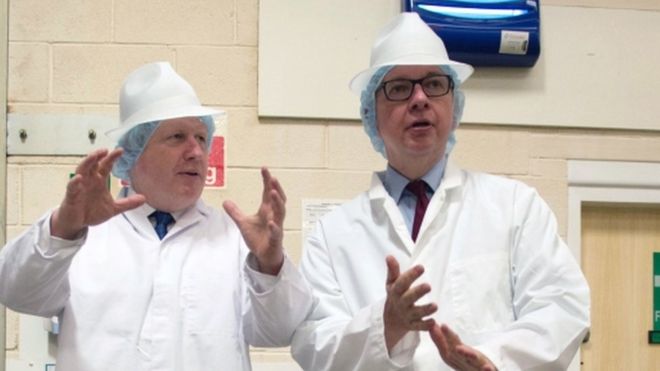Well he became Prime Minister, and in a few days lost a by-election. The rocky start could be a sign of things to come for the new leader.
Make no mistake, Boris Johnson has talent. He knows how to make a stirring speech and can tap into people’s hopes and fears as a politician.
In my last post I talked about the great man of history theory, and the rebuttal of this by Leo Tolstoy.
It is significant that there has been a change of Prime Minister. It is probably more significant over half of Theresa May’s cabinet has been sacked. It demonstrates a new team with a new direction. Support for the Tories in recent months has been abysmal, winning only 9% of the vote in the May European Elections. These changes aim to show that there is a new team and create the idea in the electorate that this is a new government.

Boris Johnson in full flight during the Tory leadership campaign.
But ultimately nothing has really changed. The same government that was (only just) elected in 2017 remains in power, now with a majority of 1. The Conservatives rely on the DUP for votes. The Tories remain split on Brexit. And most significantly, the chances of there being a deal with the EU remain slim. The major change has been Cabinet member Michael Gove announcing that ‘No Deal’ was now the working assumption of the government.
I have earlier said that a no deal Brexit where WTO rules apply is the likely outcome. The current bluster and bravado from the new Prime Minister about getting a deal rings hollow. The EU position hasn’t changed, and is unlikely to under the new regime. Further, the parliamentary arithmetic in Westminster has not changed.
Boris Johnson has successfully built up a persona as this eccentric larger than life slightly wacky Tory. He has also successfully promoted himself on the back of his two London Mayoral victories in 2008 and 2012. His supporters talk of how he successfully won the London Mayoralty, in a city that traditionally votes Labour, highlighting his skill as a politician.
So how did Boris win London? Twice. It needs to be remembered the Ken Livingston, who was leader of the Greater London Council from 1981 till 1986 when the Thatcher Government abolished the entity. In 2000 the council was re-established and Livingston was elected Mayor, both against the Tory and the New Labour candidate, as Ken’s politics were too left for the likes of Tony Blair. Having defied Thatcher and Blair Ken served as Mayor till 2008 when he was defeated by Boris Johnson. In 2012 Livingstone had another go and again was narrowly beaten. People I’ve spoken to from Livingston’s 2008 and 2012 campaign tell me Ken lacked energy in these campaigns, and believe had Labour stood another candidate with fresh ideas and vision for London, they could have beaten Johnson in both of these elections. Boris clearly saw an opportunity and seized it, where the left snatched defeat from the jaws of victory.
Boris as an MP played a key role in the Brexit campaign during the 2016 referendum. At first he sat on the fence, and many thought he would back remain. In fact an unpublished column by Johnson backed remain, only to be pulled in favour of a column backing leave. Many felt his position on Brexit was more to do with his personal ambition than anything else.
After David Cameron resigned many thought Boris would be the next PM, only to be undermined by Michael Gove. When Theresa May became PM some thought Boris had missed his chance. Turns out they were wrong.

In the days leading up to October 31st, it won’t be easy for the government. The reality is there is little chance of a deal. That ship has sailed, and in 90 days there isn’t much to be done to change that. Johnson and his government will be judged not on what happens before October, rather what happens after. If the government can survive that long.
8 thoughts on “The new UK Prime Minister”